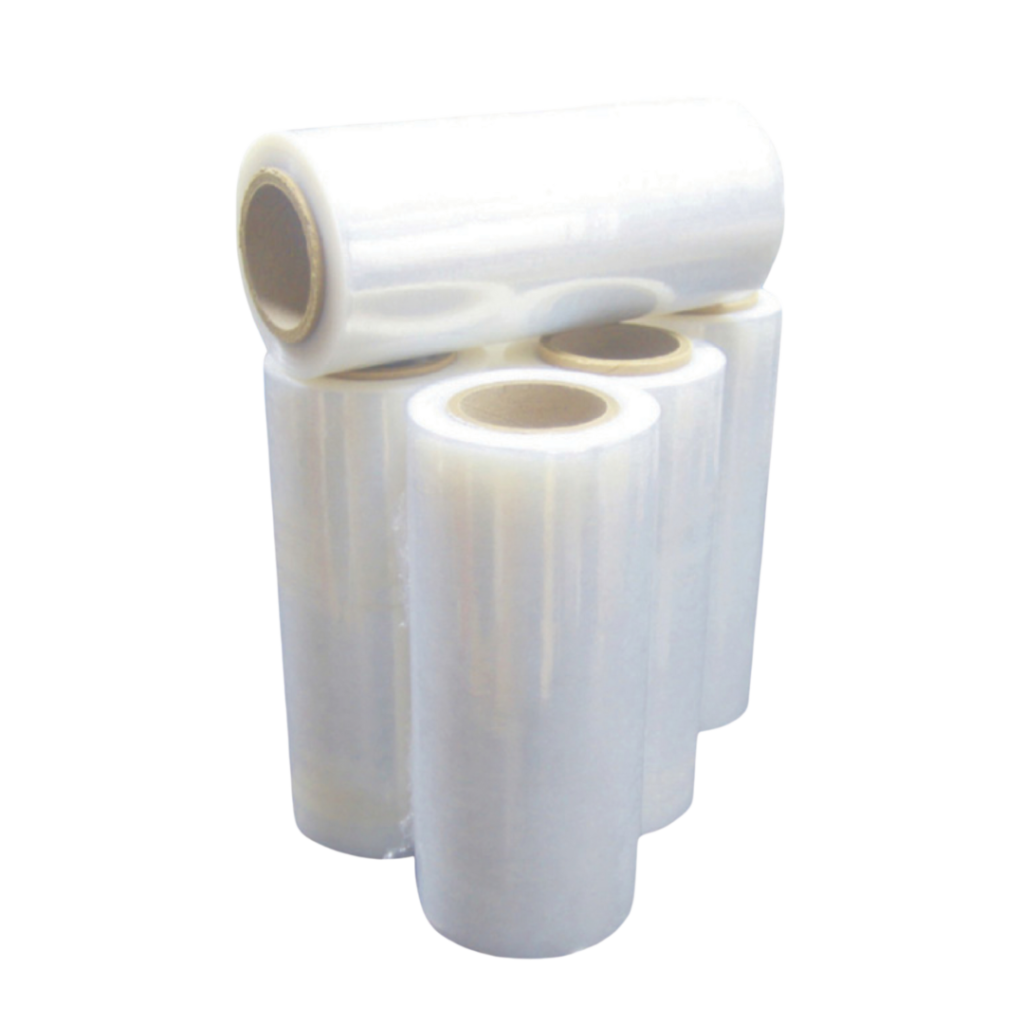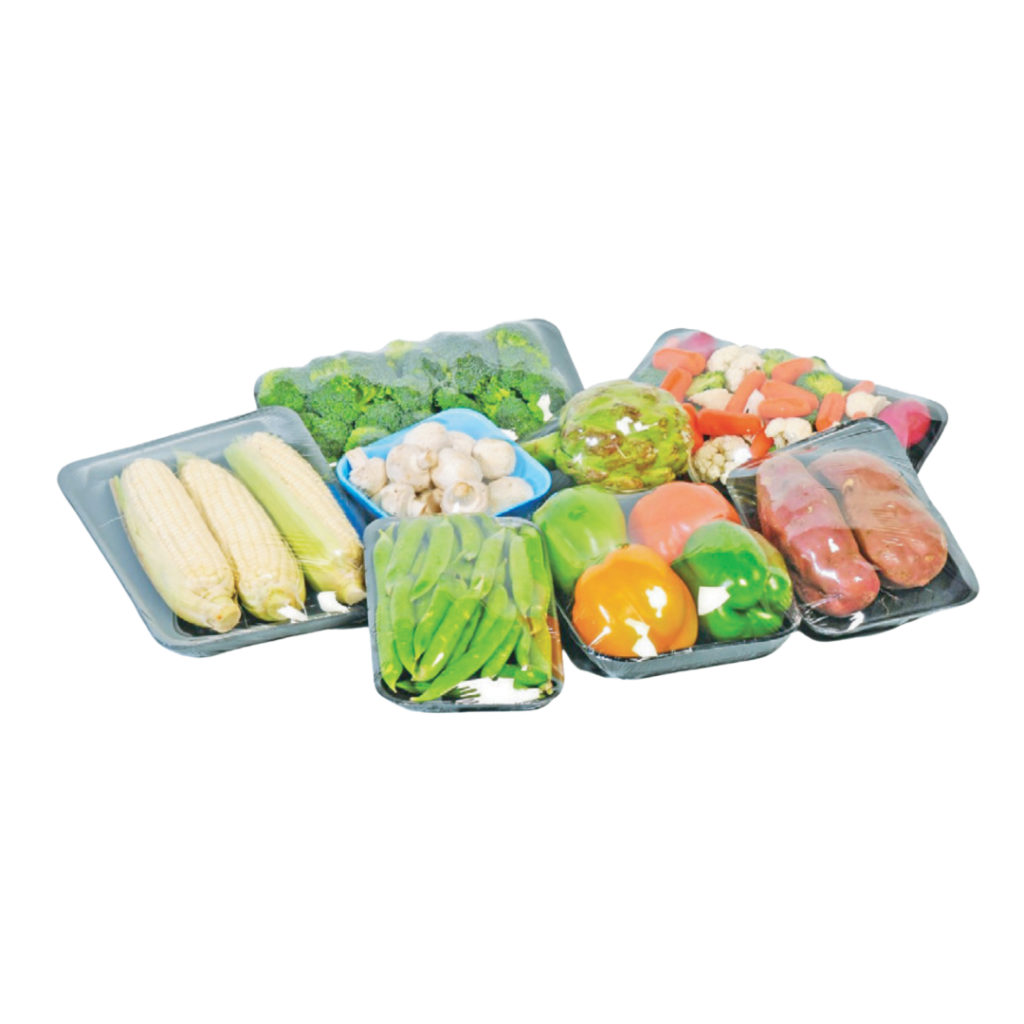Packaging engineering plays a dual role, ensuring product integrity while conveying relevant technical specifications and company values. Each material substrate offers unique performance characteristics suited to specific protection requirements, establishing an optimised balance of functionality and visual delivery.
By customising packaging methodologies to address key customer needs and leverage inherent material properties, businesses can strengthen product preservation during transport, showcase core design aspects and applications, and foster user satisfaction.
Let’s explore the importance of 5 differences between stretch and shrink films.
Understanding stretch and shrink films
Among the various material options available for protective packaging applications, stretch and shrink films offer versatility and functionality that can meet diverse requirements. While their names may imply similarities, these two materials differ meaningfully in their material properties and intended uses, each providing distinct advantages.
Understanding the material properties and performance characteristics of stretch and shrink films is paramount for organisations developing new products or formulating custom packaging requirements.
Choosing the right film involves analysing factors like the product’s geometry, weight distribution, moisture and temperature requirements during transport. With a data-driven approach, R&D teams can select the film best suited to their packaging needs while also optimising for cost, sustainability and branding objectives.
The proper film choice can protect intellectual property and product quality while creating the desired customer experience.
What is a Stretch Wrap?

Stretch wrap is a thin, flexible plastic sheet commonly constructed of polyethene used to lock and secure cased items onto a pallet. The tension while the stretch film is wrapped around can be very high. The weight can then be maintained in place because of the constrictive force this tension produces around it.
What is Shrink Wrap?

Shrink film is the tight plastic wrapping that protects consumer products, including water bottles, soda cans, sporting goods, and medications. It also increases security and protection since it is easy to detect tampering with an item that has been shrink-wrapped.
Common polymers used are polyolefins like polyethylene, polypropylene, and PVC. Each has its own unique shrinkage properties and costs.
| Did you know? Stretch film’s ability to stretch without ripping is due to the polymer chains that make up its structure. This characteristic is controlled by the viscoelastic properties of the polymer material, in particular linear low-density polyethylene (LLDPE), which is frequently used to make the stretch film. |
Five Significant Differences between Stretch Film and Shrink Film
Though both types of packaging might seem similar, There is a huge difference in their material characteristics, packing technique, and application.
Let’s discover five important differences between stretch film and shrink film.
1. Application Technique
One of the primary differences between stretch and shrink films is their application strategies. Stretch film, as the name indicates, is designed to stretch around the objects it’s wrapping. It is usually applied by securing the film to one end of the product and then stretching it as it’s wrapped around the product.
Shrink film, on the other hand, is used in a different way. Heat is needed to cause the loose film to shrink and take on the shape of the article being wrapped. Heat can be generated using heat sources like heat guns, tunnels, or other specialist machinery.
2. Material Characteristics
Stretch and shrink films are made from special materials, each with its own characteristics. Stretch film is usually made from linear low-density polyethene (LLDPE) or similar materials. It possesses elastic properties, allowing it to stretch without tearing. This elasticity gives the stretch film its potential to preserve items securely and prevent them from shifting during transit.
On the other hand, Shrink film is often made from materials like polyolefin or PVC. These materials have a memory component that enables them to shrink when exposed to heat. As the film shrinks, it conforms to the shape of the product, creating a tight seal. Shrink film provides a tamper-evident barrier and is often used for bundling multiple items together.
3. Application Range
Stretch film excels at securing and stabilising pallet loads, containers, and objects that must be tightly secured together. Its elasticity ensures that even irregularly shaped objects are securely placed throughout transportation and the garage. This makes stretch film a famous desire in industries like logistics, warehousing, and distribution.
Shrink film, then again, is regularly used for packaging individual merchandise or bundling smaller objects together. It’s commonly found in industries like meal packaging, which provides a defensive barrier and enhances product presentation. Shrink film’s capability to conform to the contours of a product tightly makes it perfect for developing glossy and professional packaging.
4. Protection and Durability
Both stretch and shrink films offer varying protection levels and sturdiness.
Stretch film provides protection by securing gadgets collectively, reducing the threat of moisture, dust and abrasions during transport. Additionally, the material has UV stabilisers integrated directly into the polymer chains to prevent degradation from sunlight exposure.
Tests show it maintains over 85% of its initial tensile strength even after 6 months of outdoor weathering. It also has anti-static properties to prevent damage from static electricity buildup.
Shrink film provides better protection since it can tightly enclose items. It creates a shield against dirt, moisture, and manipulation to protect the things within from damage and contamination. The outer layer is critical – it must be tough yet flexible.
5. Visual Appeal and Presentation
Shrink and stretch films differ significantly regarding packaging aesthetics. The shrink film’s ability to enclose and match the object’s shape makes it beautiful and attractive. The hardened film provides greater visibility and printability, allowing for a better display of brand names and product information.
Stretch film is less aesthetically pleasing than shrink film but is very practical. Instead of making beautiful packaging, its main function is to hold things together. Although shrink film provides a higher amount of visual amplification, stretch film’s transparency can still make products visible.
An Overview of Differences Between Stretch Film and Shrink Film
| Aspect | Stretch Film | Shrink Film |
| Application Technique | Stretched around items, securing them with tension | Applied loosely, shrinks and conforms to heat |
| Material Characteristics | Elastic, made from LLDPE or similar materials | Shrinks with heat, made from polyolefin or PVC materials |
| Application Range | Ideal for securing pallet loads and boxes | Used for individual products, bundling, and packaging |
| Protection and Durability | Stabilises items, reducing movement | Offers higher protection with dust, moisture, and tamper resistance |
| Visual Appeal | Functional, transparent visibility | Creates a polished appearance, customisable and branded |
| Did you know? Shrink film shrinkage is influenced by the thermal characteristics of the polymer employed, such as polyolefin or PVC. The glass transition temperature (Tg) is a characteristic of these polymers.The polymer material is in a stiff condition below the Tg while becoming more flexible and capable of deformation above it. Shrink film is produced with a Tg that is slightly lower than the usual heat: application temperature, around 160-200°C (320-392°F). |
Benefits of Stretch Film

- Regardless of size, shape, or weight, a wide variety of items and loads may be covered using stretch film. Stretch film’s versatility and stretchability enable it to adjust to varied products, guaranteeing a secure and tailored fit for each load, whether you’re wrapping little shipments or oversized pallets.
- Stretch film is frequently recyclable. It may be used to create new materials. Choosing recyclable stretch film helps achieve sustainability objectives and reduces environmental impacts. Stretch film’s effectiveness can also lead to utilising less packaging material overall, which can reduce waste production.
- Stretch film is made to secure and stabilise things tightly. Due to its elastic qualities, it may adhere strongly to surfaces, stopping objects from moving, tossing, or falling while in transit or storage. This stability minimises the possibility of damage and cuts down on the required extra strapping or wrapping.
Benefits of Shrink Film

- Logos, brand names, product details, and advertising messages may all be added to shrink film through customisation and printing. Shrink film has become a powerful marketing tool thanks to this customisable option, which enables companies to convey their corporate identity and engage with customers.
- Shrink film is adaptable and may be used for various packaging tasks, including the packaging of single goods and multi-pack bundles. It’s effective for packaging various items, including food, cosmetics, electronics, and more. Its versatility makes it the preferred option for several sectors.
- Shrink film gives things a tidy, polished, and sleek appearance, enhancing their aesthetic appeal. Potential clients will find the goods more appealing and captivating thanks to the tightly wrapped film highlighting its characteristics, branding, and labelling.
Access The Best Packaging Machines from Durapak
Access the latest cutting-edge stretch wrap and shrink wrap machines with Durapak.
Durapak is India’s leading stretch-wrapping machine dealer. We have the best wrapping machines, making your processes easier, more efficient, and more reliable.
Our stretch wrapping machines are the best load containment machines, working seamlessly with minimum stretch film usage. They keep your high-load containment secure on the pallet through our high-quality stretch films and wrapping techniques.
Leverage stretch film and shrink film
Stretch and shrink films offer reliable solutions for packaging various goods throughout the supply chain. Stretch film maintains structural integrity during transportation and storage through tensile strength, accommodating different payload sizes.
Its transparency and potential sustainability benefits provide added value. Shrink film streamlines product presentation through conformal encapsulation while minimising tampering through an effective barrier against external factors.
Subject to rigorous testing, both materials have proven effective in protecting contents from micro-defects that could compromise integrity. While stretch film emphasises functionality through affordability across applications, shrink film positions itself as a safeguard for impression and protection through customisable visual branding aligned with corporate identity.
In the end, both shrink film and stretch film serve various purposes and have applications. Businesses can make informed decisions that suit their particular packaging demands by being aware of the qualities and advantages of various materials. This promotes improved protection, appearance, and customer happiness.
| Also, you can get frequent updates on Durapak India Instagram page. |
Stretch Film vs Shrink Film: FAQs
1. What is the difference between stretch film and shrink film?
Products are packaged using shrink film. It shrinks to conform to the contours of the goods being wrapped. Pallets of already-packaged items are wrapped in stretch film before transportation. Shrink film cannot be used as a stretch film since it cannot be stretched.
2. What is different about shrink film?
Polyvinyl chloride (PVC) and polyolefin are the two main forms of shrink film that are often used. Polyolefin is preferable for foods and beverages since PVC is not ideal for edible or consumable items.
3. What are the benefits of shrink film?
The following are the three primary benefits of shrink film
- Durability
- Water-Resistance
- Cost-Efficiency
4. What material is shrink film?
Polyvinyl chloride (PVC), polyethylene (PE), and polyolefin (POF) are the three primary wraps used in shrink packaging material to safeguard and secure goods for retail and transportation settings. Each is ideal for particular applications due to its unique abilities and characteristics.
5. What is the use of stretch film?
Stretch film typically keeps boxes and merchandise on a pallet together during transit. Other uses for it include holding things together and safeguarding them during storage and transportation. There are several speciality films available for stretch film.

